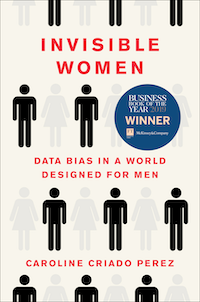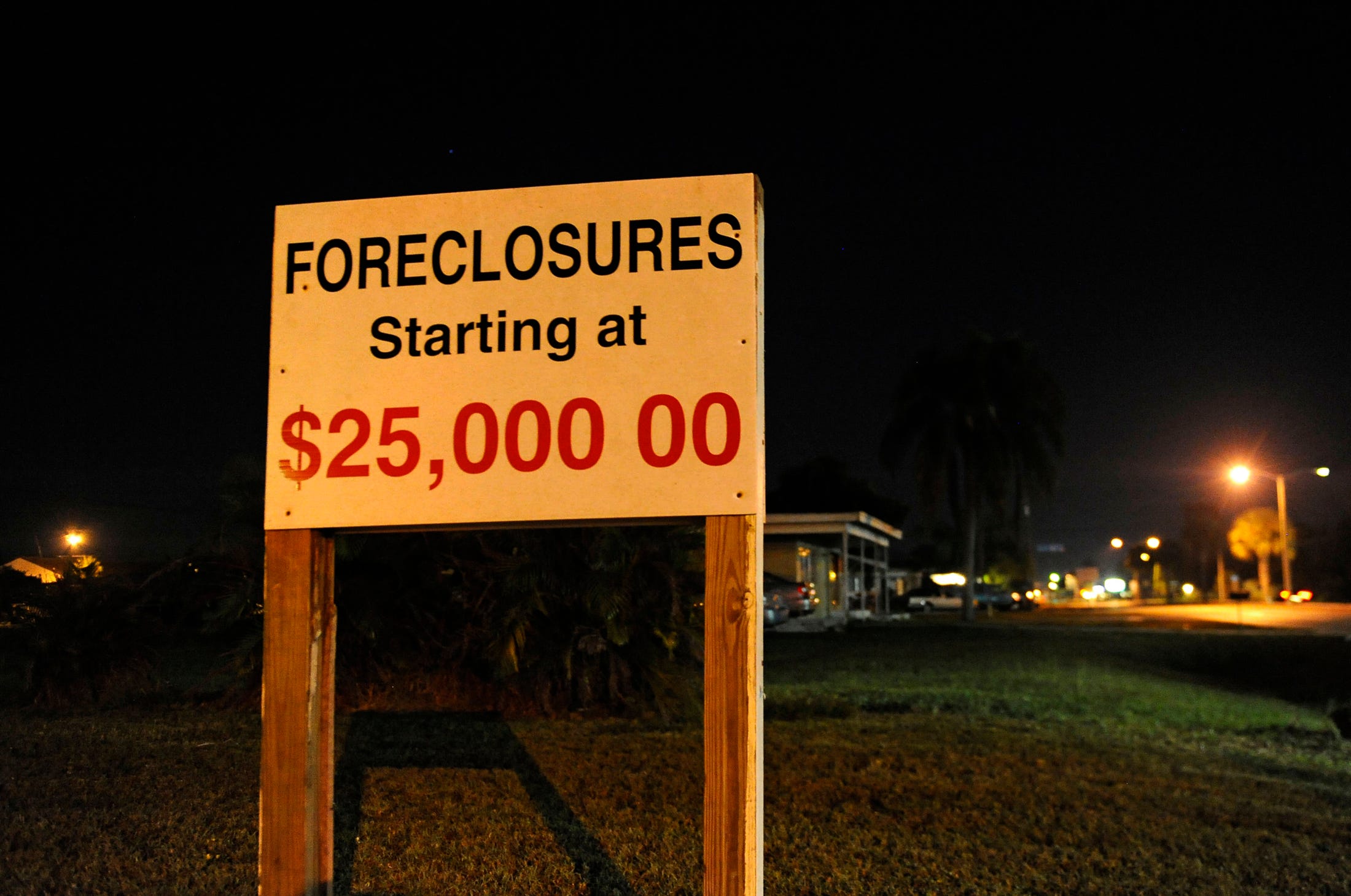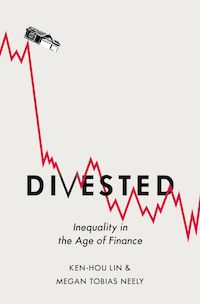CHANGING THINGS UP
Finland’s new prime minister wants her country on a four-day workweek
January 6, 2020
Finland has been at the forefront of flexible work schedules for years, starting with a 1996 law that gives most employees the right to adjust their hours up to three hours earlier or later than what their employer typically requires.
The country’s newly installed political leader, Sanna Marin, just upped the ante, though, proposing to put the entire country on a four-day workweek consisting of six-hour workdays.
Marin, the world’s youngest sitting prime minister and the leader of a five-party center-left coalition, said the policy would allow people to spend more time with their families and that this could be “the next step” in working life.
Marin is not the first politician to recently float the idea of scaling back work hours. Neighboring Sweden tested out six-hour work days a couple of years ago. And the UK’s Labour Party said in September that if elected, it would bring a 32-hour working week to the UK within 10 years. (It wasn’t elected, however, and details on how the hours would be structured were in any case vague.) In France, the standard work week is 35 hours, reduced from 39 hours in 2000.
A slew of companies around the world have been running their own experiments lately. Perpetual Guardian, a small New Zealand firm that helps clients manage financial estates, trialed a four-day work week before formally adopting the policy in November 2018. Its CEO, Andrew Barnes, is now an evangelist for the idea. In Ireland, a recruiting firm called ICE Group shifted to a four-day workweek and found that people’s habits changed, with staffers taking fewer breaks and checking social media less often.
Both firms are small—Perpetual Guardian trialed the schedule with 240 employees; ICE Group has a staff of about 50 people in Ireland. But larger companies have been experimenting, too. Microsoft Japan, for example, implemented a four-day workweek this past summer. The company said employees reported being 40% more productive, and that the policy was particularly popular among younger workers.
While shorter work weeks can bring clear benefits to employees’ well-being, they also can be difficult to implement. The Wellcome Trust, a science research foundation in London, dropped plans for a four-day workweek last year, saying it would be “too operationally complex to implement” for its staff of 800.
But for those that have latched onto the idea, there is the prospect of baking even more flexibility into the system. At Perpetual Guardian, for example, a four-day workweek isn’t the only model; after measuring the productivity of its staff during a typical, five-day workweek, the firm set a standard benchmark and then allowed its employees to work out how to get there in 80% of the time, which could mean fewer workdays per week, or shortened hours spread across five days.
Finland has been at the forefront of flexible work schedules for years, starting with a 1996 law that gives most employees the right to adjust their hours up to three hours earlier or later than what their employer typically requires.
The country’s newly installed political leader, Sanna Marin, just upped the ante, though, proposing to put the entire country on a four-day workweek consisting of six-hour workdays.
Marin, the world’s youngest sitting prime minister and the leader of a five-party center-left coalition, said the policy would allow people to spend more time with their families and that this could be “the next step” in working life.
Marin is not the first politician to recently float the idea of scaling back work hours. Neighboring Sweden tested out six-hour work days a couple of years ago. And the UK’s Labour Party said in September that if elected, it would bring a 32-hour working week to the UK within 10 years. (It wasn’t elected, however, and details on how the hours would be structured were in any case vague.) In France, the standard work week is 35 hours, reduced from 39 hours in 2000.
A slew of companies around the world have been running their own experiments lately. Perpetual Guardian, a small New Zealand firm that helps clients manage financial estates, trialed a four-day work week before formally adopting the policy in November 2018. Its CEO, Andrew Barnes, is now an evangelist for the idea. In Ireland, a recruiting firm called ICE Group shifted to a four-day workweek and found that people’s habits changed, with staffers taking fewer breaks and checking social media less often.
Both firms are small—Perpetual Guardian trialed the schedule with 240 employees; ICE Group has a staff of about 50 people in Ireland. But larger companies have been experimenting, too. Microsoft Japan, for example, implemented a four-day workweek this past summer. The company said employees reported being 40% more productive, and that the policy was particularly popular among younger workers.
While shorter work weeks can bring clear benefits to employees’ well-being, they also can be difficult to implement. The Wellcome Trust, a science research foundation in London, dropped plans for a four-day workweek last year, saying it would be “too operationally complex to implement” for its staff of 800.
But for those that have latched onto the idea, there is the prospect of baking even more flexibility into the system. At Perpetual Guardian, for example, a four-day workweek isn’t the only model; after measuring the productivity of its staff during a typical, five-day workweek, the firm set a standard benchmark and then allowed its employees to work out how to get there in 80% of the time, which could mean fewer workdays per week, or shortened hours spread across five days.
Finland’s new prime minister backs four-day working week
Jon Stone
The Independent January 6, 2020

Finland's Prime Minister Sanna Marin took office in December at the head of a broad left-of-centre coalition: AFPMore
Finland’s new prime minister is a supporter of cutting the working week to four-day days, and has argued that the change would let people spend more time with their families.
Sanna Marin, a social democrat, who took office in December, leads a broad coalition that also includes greens, leftists and centrists.
“I believe people deserve to spend more time with their families, loved ones, hobbies and other aspects of life, such as culture,” she had previously said at her party's conference in the autumn of 2019.
“This could be the next step for us in working life.”
While the idea is not government policy under her coalition administration, her recent support for the radical move raises the prospect that Finland could eventually become the latest country to experiment with cutting working hours.
Ms Marin, who is the world’s youngest serving national leader, also suggested that as an alternative the standard working day could be reduced to six hours, down from the current eight.
The working week in Europe was progressively shortened around the turn of the 20th century, largely under pressure from the labour movement – with the gradual introduction of the modern two-day weekend and the eight-hour day.
But change has been slower in recent decades, with the five-day week and eight-hour day becoming the standard benchmark across the developed world.
An attempt by former French prime minister Lionel Jospin to bring in a 35-hour workweek at the beginning of the 21st century produced only limited success, with many loopholes and low uptake.
Ahead of last year’s general election, the UK’s Labour Party said it wanted to work towards a four-day week as a long-term aim within a decade, though the party remains in opposition.
Critics say reducing the working week while paying people the same amount would impose a cost on business, but proponents say the difference would be made up because of increased productivity.
Some local councils in Finland’s neighbour Sweden have been experimenting with six-hour days in recent years, with early results suggesting the move increased productivity.
The political backdrop to the Finnish prime minister’s call is months of industrial unrest, which brought down the previous government. The strikes were brought to an end by a pay deal between unions and employers, which saw improvements in pay rises and working conditions.
Finland has one of the highest levels of trade union coverage in Europe, with 91 per cent of employees covered by collective agreements guaranteeing working time, pay and conditions.
This figure compares with an EU average of 60 per cent. The corresponding coverage for the UK is 29 per cent of workers, one of the lowest in the bloc – while the highest are found in France, Belgium and Austria, where collective bargaining coverage is near-universal.
This article has been updated to clarify that Sanna Marin's comments were made in 2019 before she became prime minister.
Finnish prime minister wants 4-day workweek, 6-hour workday

Brittany De Lea
Fox BusinessJanuary 6, 2020
Finland’s new prime minister, Sanna Marin, wants to encourage Finnish workers to have a better work-life balance.
The 34-year old, who has been serving as prime minister since December, has detailed plans to introduce an abridged workweek in the country as a means to allow people to spend more time at home.
Not only is Marin aiming for a four-day workweek, she is also weighing a six-hour working day, according to New Europe.
“I believe people deserve to spend more time with their families, loved ones, hobbies and other aspects of life, such as culture. This could be the next step for us in working life,” Marin said, as reported by multiple news outlets.
NEW ZEALAND FIRM'S 4-DAY WORKWEEK WORKS, OTHERS SHOULD FOLLOW
4-DAY WORKWEEKS ARE BETTER FOR BUSINESS, MICROSOFT FINDS – AND HOW TO MAXIMIZE YOUR TIME AT THE OFFICE
Other countries and businesses have also considered similar ideas.
As previously reported by FOX Business, a New Zealand company tested and later officially implemented a four-day workweek after deeming it was beneficial for business and staff.
Perpetual Guardian – an estate planning business – conducted a study over the course of two months whereby employees were still paid for five days of work. An independent study of the shortened workweek concluded that staff stress levels decreased, engagement increased – as did measures of leadership, commitment, stimulation and empowerment.
The company’s CEO is even encouraging other businesses to take up the model.
Microsoft tested a four-day week in Japan, finding productivity levels increased and business expenses declined.
In Sweden, a 23-month study was conducted among nurses at a care center for seniors, which found that nurses took fewer sick days and absences and had more energy when they left their jobs.
Microsoft Japan’s four-day week is new evidence that working less is good for productivity
November 4, 2019
The theory behind introducing a four-day work week—without cutting pay—is that employees will be so delighted to have time gifted back to them that they’ll work harder in the hours remaining. The latest trial to emerge, from the large workforce at Microsoft Japan, suggests it might be applicable at scale, and even in one of the world’s most notoriously “workaholic” cultures.
Microsoft Japan ran a trial in August 2019, when every Friday it closed the office and gave roughly 2,300 full-time employees a paid holiday, according to Sora News 24, which first reported the story in English. The result was an enormous jump in productivity. Based on sales per employee, workers were almost 40% more productive in the compressed hours of August 2019 as they were the same month a year earlier.
Other productivity hacks were also encouraged, including limiting meetings to 30 minutes and suggesting that instead of calling meetings at all, employees could more fully utilize software available for online collaboration (in this case, of course, that software was Microsoft Teams, though other systems are available). On their day off, workers were encouraged to make use of the time by volunteering, learning, and taking rest “to further improve productivity and creativity,” according to a company blog (link in Japanese).
In the coming months, another trial will run with slightly different parameters, the blog adds. This trial won’t cut hours in the same way, but rather suggests that employees focus on resting well and coming together to share ideas about how to work, rest, and learn.
Other companies that have trialed and implemented four-day weeks have found, similarly, that their productivity is boosted. Perpetual Guardian, the New Zealand estate management firm that was one of the first to go public with a research-backed assessment of its trial, and then adopted the policy in November 2018, found that productivity was unharmed by the shortened work week, while staff stress levels were dramatically improved. More recently, recruitment firm ICE Group this year became the first company in Ireland to adopt a four-day week for all its staff.
Microsoft Japan’s trial is significant because it’s the biggest yet in terms of both staff numbers and the apparent effect on productivity. It’s caught the global imagination, perhaps, because Japan’s work culture is seen as particularly punishing. If a big Japanese tech company can change its ways and achieve startlingly better results, perhaps there’s hope for combatting other long-hours work cultures, like the US.
With translation assistance from Tatsuya Oiwa.
The theory behind introducing a four-day work week—without cutting pay—is that employees will be so delighted to have time gifted back to them that they’ll work harder in the hours remaining. The latest trial to emerge, from the large workforce at Microsoft Japan, suggests it might be applicable at scale, and even in one of the world’s most notoriously “workaholic” cultures.
Microsoft Japan ran a trial in August 2019, when every Friday it closed the office and gave roughly 2,300 full-time employees a paid holiday, according to Sora News 24, which first reported the story in English. The result was an enormous jump in productivity. Based on sales per employee, workers were almost 40% more productive in the compressed hours of August 2019 as they were the same month a year earlier.
Other productivity hacks were also encouraged, including limiting meetings to 30 minutes and suggesting that instead of calling meetings at all, employees could more fully utilize software available for online collaboration (in this case, of course, that software was Microsoft Teams, though other systems are available). On their day off, workers were encouraged to make use of the time by volunteering, learning, and taking rest “to further improve productivity and creativity,” according to a company blog (link in Japanese).
In the coming months, another trial will run with slightly different parameters, the blog adds. This trial won’t cut hours in the same way, but rather suggests that employees focus on resting well and coming together to share ideas about how to work, rest, and learn.
Other companies that have trialed and implemented four-day weeks have found, similarly, that their productivity is boosted. Perpetual Guardian, the New Zealand estate management firm that was one of the first to go public with a research-backed assessment of its trial, and then adopted the policy in November 2018, found that productivity was unharmed by the shortened work week, while staff stress levels were dramatically improved. More recently, recruitment firm ICE Group this year became the first company in Ireland to adopt a four-day week for all its staff.
Microsoft Japan’s trial is significant because it’s the biggest yet in terms of both staff numbers and the apparent effect on productivity. It’s caught the global imagination, perhaps, because Japan’s work culture is seen as particularly punishing. If a big Japanese tech company can change its ways and achieve startlingly better results, perhaps there’s hope for combatting other long-hours work cultures, like the US.
With translation assistance from Tatsuya Oiwa.





 Itwas in 2008 that the big bisphenol A (BPA) scare got serious. Since the 1950s, this synthetic chemical had been used in the production of clear, durable plastics, and it was to be
Itwas in 2008 that the big bisphenol A (BPA) scare got serious. Since the 1950s, this synthetic chemical had been used in the production of clear, durable plastics, and it was to be  Awoman doesn’t need to be in precarious employment to have her rights violated. Women on irregular or precarious employment contracts have been found to be
Awoman doesn’t need to be in precarious employment to have her rights violated. Women on irregular or precarious employment contracts have been found to be 
 Text adapted from Caroline Criado Perez’s Invisible Women, published by Abrams Press.
Text adapted from Caroline Criado Perez’s Invisible Women, published by Abrams Press.

 These days, finance is so fundamental to our everyday lives that it is difficult to imagine a world without it. But until the 1970s, the financial sector accounted for a mere 15 percent of all corporate profits in the US economy. Back then, most of what the financial sector did was simple credit intermediation and risk management: banks took deposits from households and corporations and loaned those funds to homebuyers and business. They issued and collected checks to facilitate payment. For important or paying customers, they provided space in their vaults to safeguard valuable items. Insurance companies received premiums from their customers and paid out when a costly incident occurred.
These days, finance is so fundamental to our everyday lives that it is difficult to imagine a world without it. But until the 1970s, the financial sector accounted for a mere 15 percent of all corporate profits in the US economy. Back then, most of what the financial sector did was simple credit intermediation and risk management: banks took deposits from households and corporations and loaned those funds to homebuyers and business. They issued and collected checks to facilitate payment. For important or paying customers, they provided space in their vaults to safeguard valuable items. Insurance companies received premiums from their customers and paid out when a costly incident occurred.









